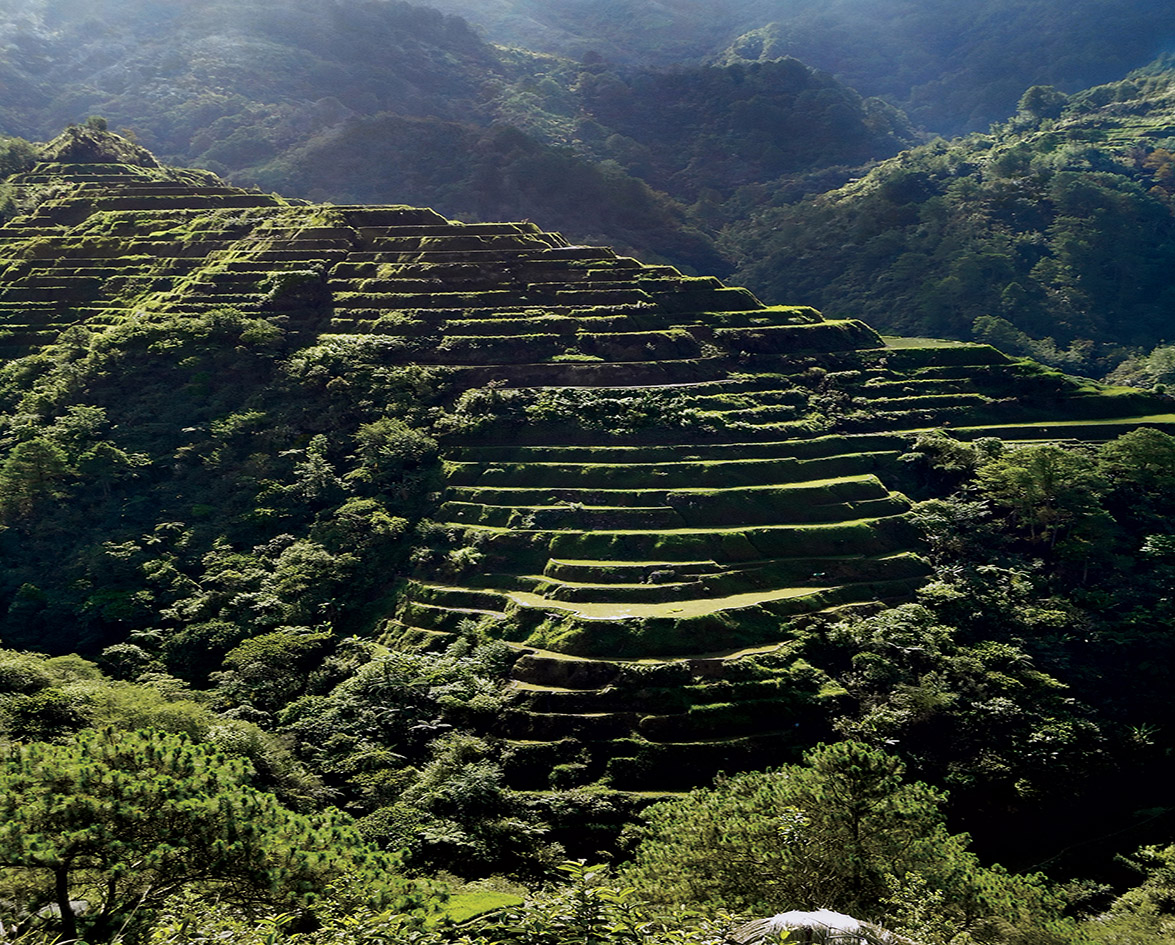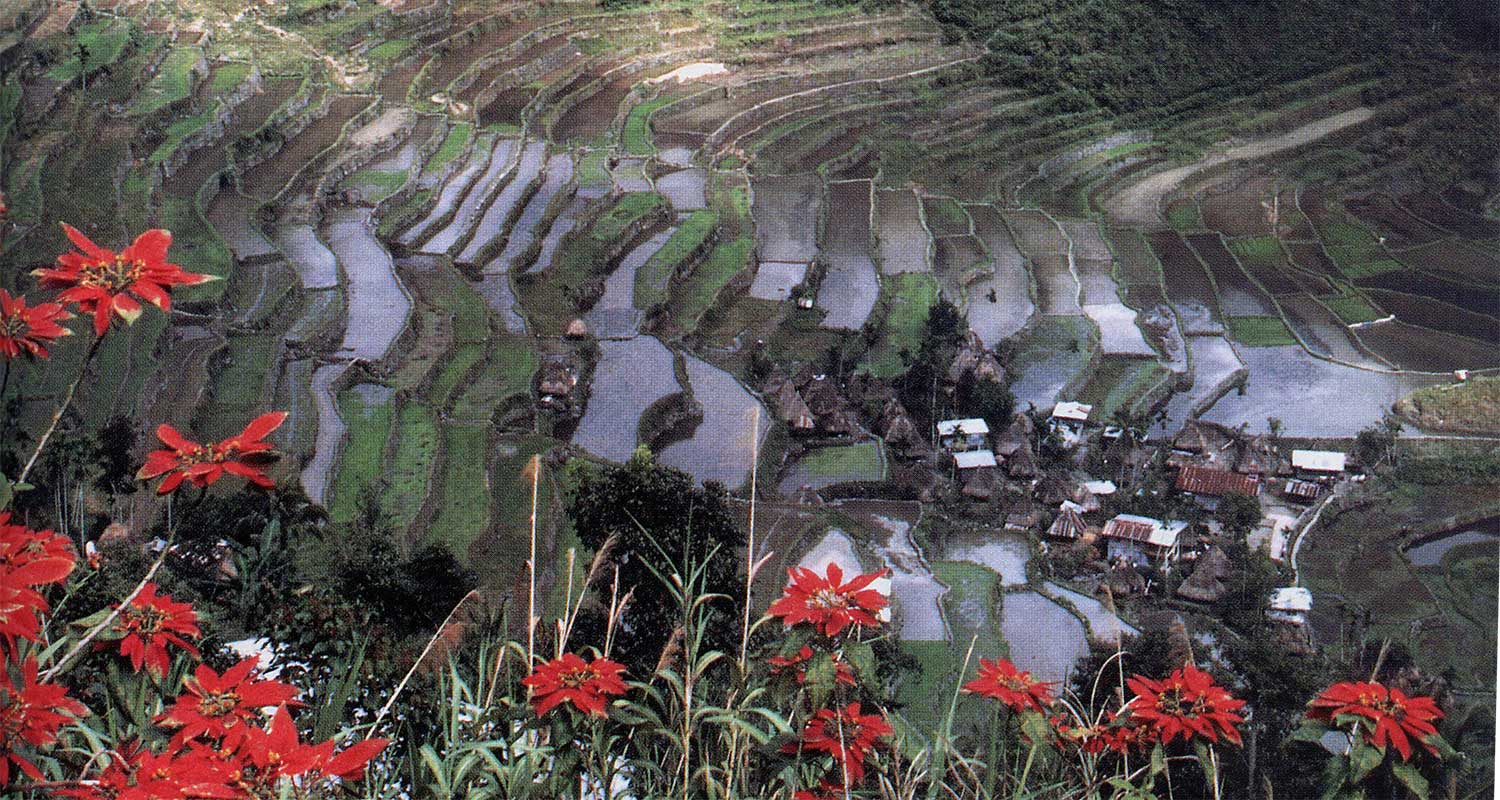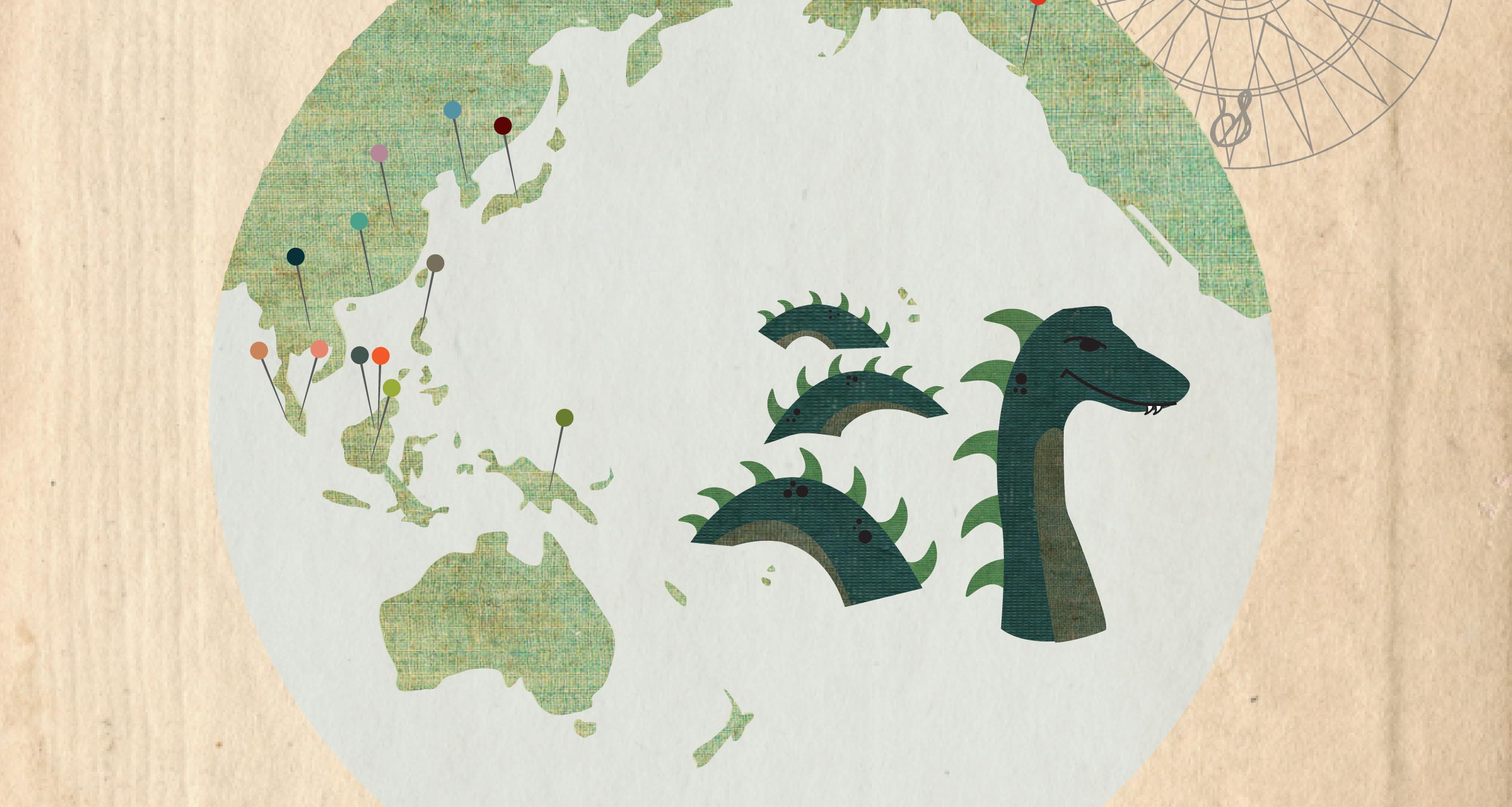Extensive green steps stretched endlessly up the mountainside before me, their vibrancy enough to stop anyone in their tracks. The peak reached soundlessly to the sky, commanding attention and respect. I was experiencing a marvel of 2,000-year-old ingenuity and knowledge, catching a glimpse into another world.
Early Irrigation System
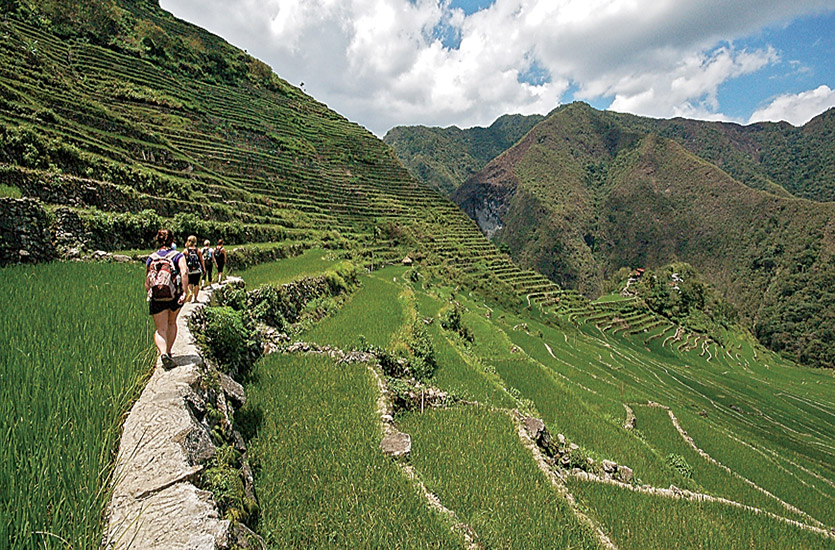
The Batad Rice Terraces are located in the Cordillera mountain range, on the island of Luzon — the largest of the 7,107 islands that make up the archipelago of the Philippines. They are an astounding example of the capabilities of an ancient civilization. The Ifugao ethnic group has occupied this mountain range for thousands of years, cultivating a technique for farming wet rice through development of the rice terraces, and passing the land and knowledge down from generation to generation. A complex system of bamboo pipes, dams, and channels distributes water to each terrace from the forest above. The terraces spread over a land area of more than 1,000 square kilometers, and reach an astounding altitude of more than 1,500 meters. Their height, combined with the way they follow the curve of the mountain, makes them impressive. They are often referred to as the eighth wonder of the world.
I had never seen anything so green, so extensive. They seemed to stretch on forever.
During our 45-minute hike through the terraces, while visiting in May 2010, my friends and I carefully stepped down the mountainside to the center. There, we saw the Tappiah waterfall plunge 70 meters to a pool below. Above us the green terraces extended into the clouds. “I had never seen anything so green, so extensive,” recalls fellow traveller Laska Paré; “they seemed to stretch on forever.”
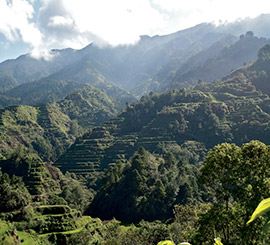
We had forgotten that what goes down must come up; we had to clamber back up the terraces to the village above. Crawling up steps large enough for giants was an achievement, and all of us struggled to keep pushing forward. As we reached the top of the mountain, it dawned on us that we had walked on stone paths created thousands of years ago, and journeyed through a landscape that is an astonishing echo of the past.
Farming Wet Rice
“Rice grows in a wide range of conditions, but the most popular type is grown in flooded fields and is descended from varieties of rice which grew wild in swamps. The only reason to go to the immense undertaking of terracing a whole mountainside is to grow flooded ‘wet’ rice in places where it normally cannot grow. The most common reason for
this… is the tremendous social status associated with wet rice,” explains Jim Placzek, an instructor in the Asian Studies Program at Langara College. “In some Southeast Asian languages, wet rice is called ‘rice of the lords.’ Dry rice is associated with poor, illiterate hill tribe peoples; wet rice with the kingdoms and elites of the lowlands.”
The Batad Rice Terraces are the longest-running viable agriculture experiment in the world—but time is starting to run against them. Nowadays, farmers cannot grow enough rice in a year to support themselves. They must buy imported rice as a backup. Deforestation continues to cause damage to abandoned terraces, and while some of them— like Batad— are still in use, the knowledge needed to maintain them is dying off. While the terraces endure, the question remains: how much longer will they function?
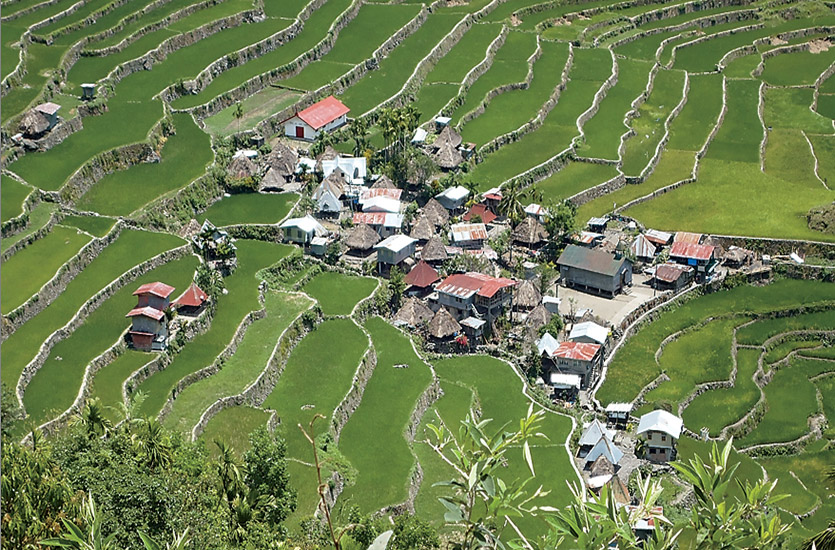
The Batad Rice Terraces are an irrefutable admission of an ancient civilization’s ingenious engineering skills. Centuries ago, tribesmen carved out the mountainsides and created a historical heritage site, a wonder for the eyes, and a learning ground for modern civilizations. While the Philippines is a country overflowing with beautiful sights and unbelievable explorations, the Batad Rice Terraces are especially inspiring: they are a piece of history that will take your breath away and leave you standing in awe.





